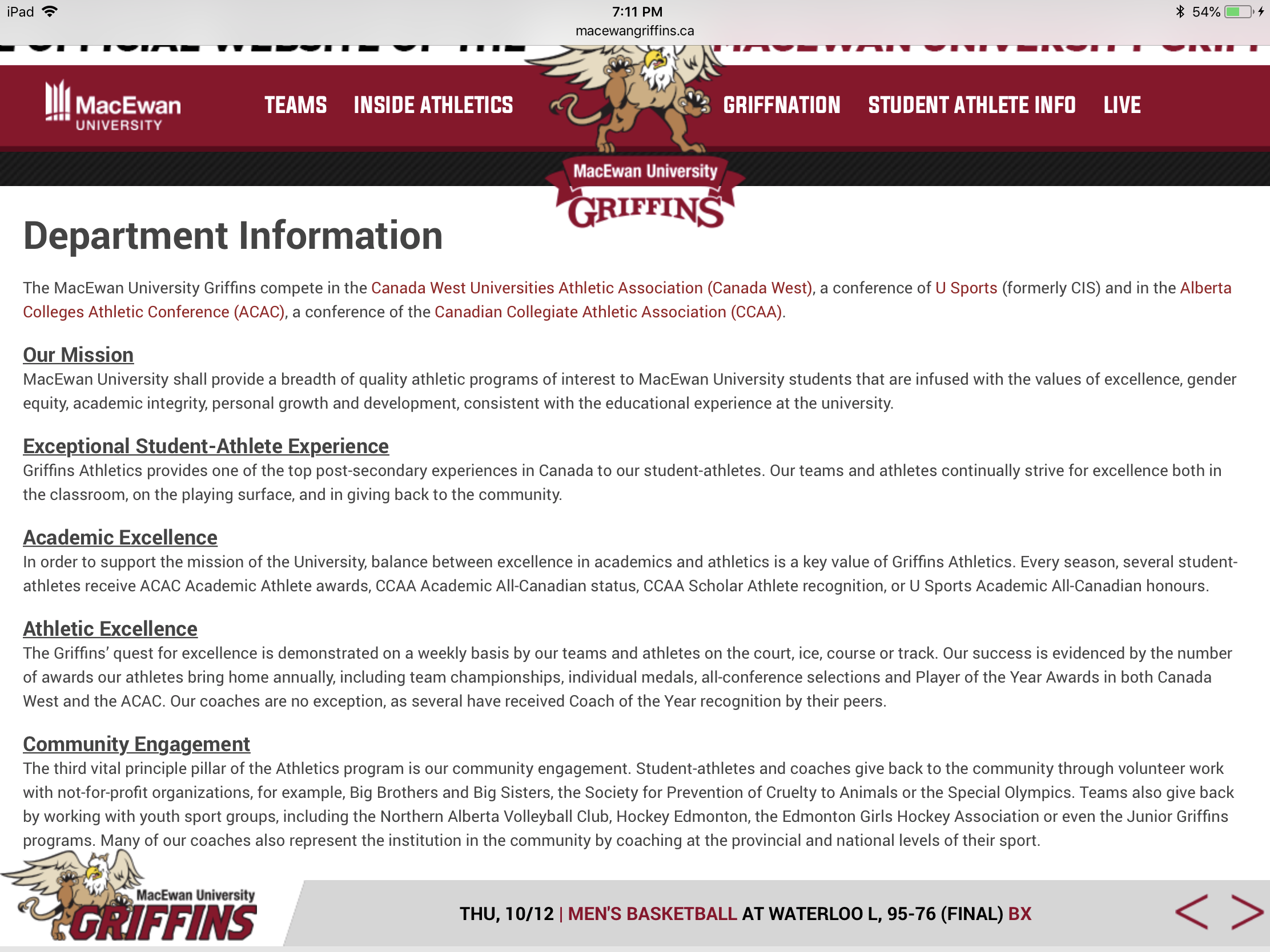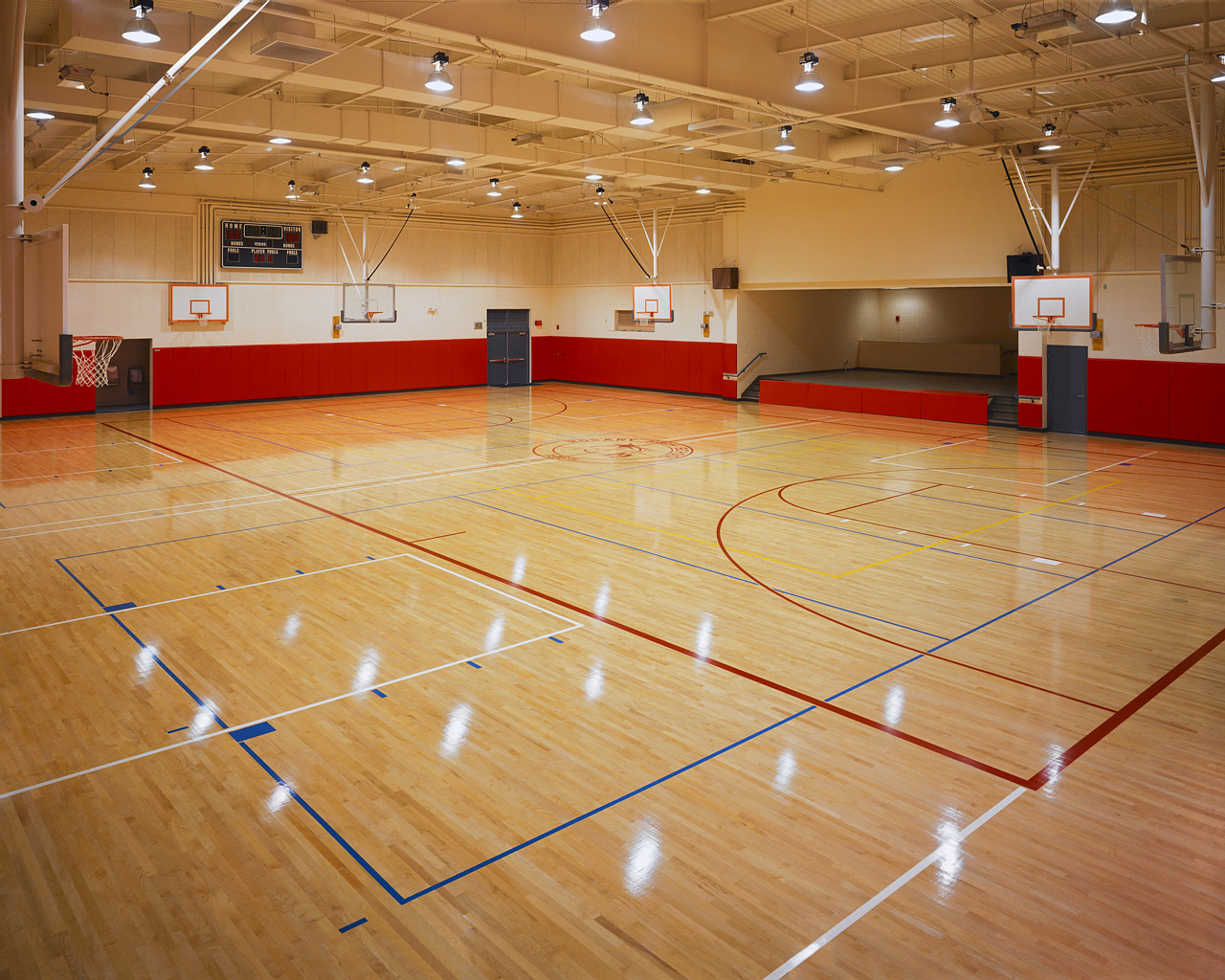I often wonder what John Wooden would think of modern basketball. In an era where American high school players are pseudo-celebrities and the universities recruiting them are being investigated by the FBI it no longer feels like: “what you are as a person is far more important than what you are as a basketball player.” Up north, the Canadian version of the NCAA, USports, is far less dramatic both in the news and in their budgeting . The inter-university league in Canada has differentiated itself from its southern counterpart by design. Institutions whose athletic teams belong to USports are restricted from providing scholarships greater than the costs of tuition and compulsory fees and aren’t allowed to cover room or board. Even so, the prestige of being a university athlete, combined with the desire to imitate NCAA basketball culture, leads to an overemphasis on athletics at the expense of academics and community service. This past season I aimed to change that by partnering with Boys and Girls Club / Big Brothers, Big Sisters (BGCBigs) to create a weekly mentoring program for underprivileged youth.
The NCCP describes the core coaching competency valuing as: (1) taking a lead in building morale, even under difficult circumstances and (2) articulating and modelling the vision and values of their sport programs. By reviewing the process I took to establish a partnership with BGCBigs, its impact on our team and its impact on the children we served, I will demonstrate clear moral reasoning while making decisions in my current coaching context.
The athletics program at MacEwan University is built on 3 pillars: academic excellence, athletic excellence, and community engagement. They are described below:

We hadn’t devoted much time to community engagement during our 2016-2017 season. As such, leading up to 2017-2018 our head coach had made it a priority. He arranged a trip to the Mustard Seed to work a soup kitchen and a visit to an at risk youth facility to help restore their basketball court. Wanting to help, I engaged with BGCBigs to organize a year long mentorship program. Stealing from a past coaching experience, the idea was to minimize the demands on our athletes by eliminating travel requirements and working the program into time already allocated to our team. It was a great idea…in theory.
Logistically the program struggled to get off the ground. Mounds of paperwork designed to vet potential volunteers frustrated our athletes and coaches alike. Any momentum surrounding our new partnership was lost. The proposed October start was pushed back again and again. Everything was pointing to program failing before it even started but I wasn’t about to let my brainchild die so quickly and easily. Finally in January, four months after our proposed start date, we welcomed the BGCBigs youth into our gym for the first mentoring session. From that point forward every Monday at 4:00 the gym was filled meaningful mentorship interactions between our athletes and a group of underprivileged youth. I was proud of what I had helped to create.
The difficulty associated with the successful establishment of this mentorship program brought with it many lessons worthy of sharing. The most notable are:
‘Buy in’ is everything: The biggest obstacle that stood in the way of the program was a lack of buy in from coaches and players alike. Many were lukewarm about the program in general, others hated the idea of having to do more paperwork, most resented the idea that we were placing another demand on their time (even though it was already allotted to team activity). Part of valuing is the ability to build morale even in difficult circumstances. Initially I struggled in this area. In hindsight I spent too much time trying to convince the ‘haters’ when I should have been focusing my energy on those who were excited about the program. My belief in the value and viability of the program was never shaken but my approach flawed. I assumed everyone would match my excitement when I should have asked for interest. A smaller group of mentors who were bought in would have reduced the number of youth we could serve but it also would have created a proof of concept to draw the others in. Long story short, avoid biting off more than you can chew until you can prove the value of your idea.
Consider multiple perspectives: I knew my idea matched with the overall vision of the school and the athletic department. I failed to account for how little our players cared about that fact. What I considered an opportunity to model the beliefs of our institution the athletes considered a hassle that took time away from basketball, school, and the social aspect of post-secondary life. My mistake was dismissing their viewpoint as wrong instead of beginning from a place of empathy. Instead of being frustrated at their disinterest, I should have extended an olive branch and tried to walk in their proverbial shoes. My idea was, and remains, an excellent way to model the vision and values of MacEwan University athletics. Where I failed was in my ability to articule the vision and values to our players. Again, instead of taking the time to explain, I assumed they would understand and buy in easily. Long story short, take the time to share your passion. Paint an irresistable picture that draws people into your idea before you ask anything of them.
At the end of our mentorship program I was asked to meet with representatives from BGCBigs to reflect. To my pleasant surprise, the program was viewed as a major success despite the difficulties getting it off the ground. There was an extreme desire to maintain and improve the program moving forward. As I write this article the BGCBigs team is preparing impact videos from the children whose lives we impacted during our time together. To this day I don’t think our athletes realize the good they have done for others in their immediate community nor the personal value of adding this experience to their resume. I am looking forward to growing the program in the coming years.
TL;DR: When seeking to establish a new idea, start small and create buy in. Prove the concept before you ask others to join in. Avoid projecting your beliefs and views on others. Don’t assume they see the world as you do. Instead, paint a picture so irresistable that people are desperate to join in.
JP

I think coaches can easily forget that we are the ones with the unique perspective. Basketball is my life, it is my job, it pays my mortgage. I wake up thinking about it and go to bed thinking about it. Sometimes it even keeps me up at night. Outside of my family it is the thing that I care about and think about the most. Most student-athletes don’t have that perspective. They have played basketball for fun for most of their life, they just happen to be pretty good. Student-athletes have a million things on their minds. Anything from school to laundry, to cooking, to paying bills, to girls to all of the new things that University has to offer for them. Basketball is the easy part. They know basketball (or at least they think they do). For many of them it has been used in their life as a place of calm. When I was mad as a kid, I went outside and shot hoops, it made me feel good. Sometimes I still do that. University is a time of change for our student-athletes and how they approach basketball is something that changes in this time period, but for us to expect that they are going to care at the level of adults who use it as our occupation will surely leave us disappointed.
Jackson great blog and great initiative to use the BGCBigs project to build out your community engagement. I also appreciate Eric’s comments which echo the demands for coaches and athletes. I sometimes think of an analogy of pushing a car when it comes to different projects. In the beginning it is hard to get the car rolling but once it starts moving it can be pretty easy to push. Anyway, I think you hit the nail on the head when discussing the value of the community engagement pillar. Many Usport programs have this in their boiler plate strategy to demonstrate that there is some way to give back to the community. Often however, there is little value placed on making a real impact. What intrigues me about the BGCBigs is whether basketball would serve as a vehicle to help the mentorship. As BGCBigs came to McEwan, I was wondering if basketball or basketball like games were built into the process?
Moving forward, it would be good to see if the project could become part of the team culture. That is, could you position it as part of the athlete performance by demonstrating its value to McEwan, the Men’s Basketball program and individual athletes? I think showing the impact that the initiative had this year would be a good start. Further, as a values proposition, there is good linkage to the values that you likely aspire to the players that can maximize performance; eg. serving others, being unselfish, committing as a team, roll modelling, etc..
Congratulations on making this happen.